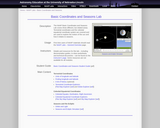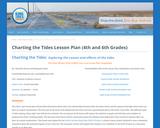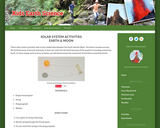
This parent guide supports parents in helping their child at home with the 6th grade Science content.
- Subject:
- Science
- Material Type:
- Reference Material
- Vocabulary
- Author:
- Kelly Rawlston
- Letoria Lewis
- Date Added:
- 10/11/2022

This parent guide supports parents in helping their child at home with the 6th grade Science content.

This resource accompanies our Rethink 6th Grade Science course. It includes ideas for use, ways to support exceptional children, ways to extend learning, digital resources and tools, tips for supporting English Language Learners and students with visual and hearing impairments. There are also ideas for offline learning.

This resource is a tool that calculates the time and date of the March equinox, the June solstice, the September equinox and the December solstice at any geographic location of your choice.

This document provides activities to support the study of everyday phenomena and encourage students to take the first steps towards constructing a scientific model. The activities help students understand the apparent movement of the Sun, the length of daylight and its changes in the course of the seasons, the rotation of the Earth on its axis, the solar system and the universe.

In this activity, students calculate the average distance of each planet from the Sun scaled to a football field drawn and measured out on a 30 x 35 cm paper.

This resource is an article explaining the fall equinox. This resource allows you to enter any city into the article for a precise date and time of the upcoming equinox.

Students use a simulator to better understand how the positions and motions of the Earth and moon create seasons.

Students use data to investigate and graph the changing day length through the year and across latitudes.

This three-part lesson plan will provide information about tides, the relationships between tides and water levels, and the impacts that high water levels can have on coastal communities.

In this activity, students will build a model in order to demonstrate how and why eclipses happen.

Students conduct research on the planets, with emphasis on patterns and cycles, and gain an appreciation for the variation in length of year, length of day, and seasonal variation across the solar system. To explore whether the patterns and cycles on the planets are related to planetary positions in the solar systems, students create posters that can be used to mark the locations of the planets within a model of the solar system.

This is an activity about creating impacts on sandy surfaces. Learners will use trays of sand and a variety of solid objects to model the effects of "impactors" on the surface. This is activity 6 of 9 in Mars and Earth: Science Learning Activities for After School.

Students will work in collaborative teams to construct models to show various aspects of Earth.

In this lesson, students explore the total solar eclipse of 1900 and how Wadesboro, NC was chosen as a place of study for the eclipse. Through several reading and hands-on activities, students will learn more about eclipses, what causes them, and their paths.

Making a scale model of the solar system is not a novel idea, but this site restricts its consideration to the Earth, Moon, and Mars and explains in more detail than most. Using balloons for the planetary bodies makes the actual construction simple. A student activity sheet is included.

In this activity, students demonstrate the movement of the Moon around the Earth.

This resource is an activity in which students will learn how the sun, moon and earth all move in relation to each other.

This resource is an article explaining the difference between the moon and the earth and how they revolve and rotate.

This resource is a collection of vocabulary words and definitions regarding the earth, moon and sun system.

These pinhole projector eclipse postcards allow safe observations of the North American Total Solar Eclipse on August 21, 2017. The two sided postcard features a map of the contiguous US and what percentage of the eclipse you’ll see at different locations. The other side shows how to see the eclipse safely using projection through the hole in the center of the card (you can punch it out) and tips about the eclipse. Available in English and Spanish.